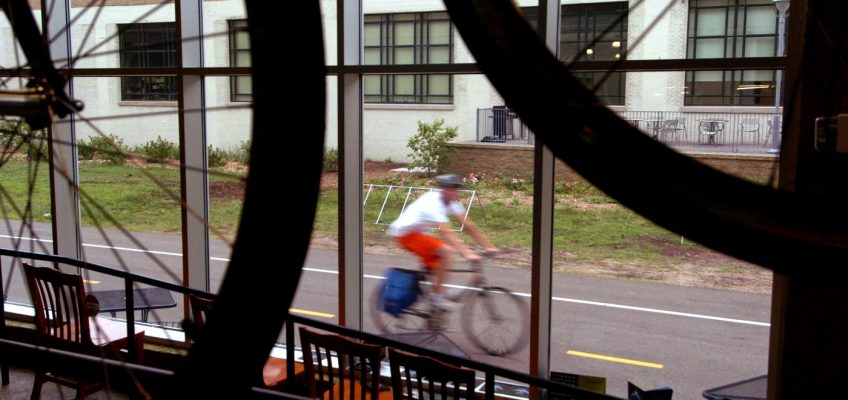Sarah Gantz | The Philadelphia Inquirer (TNS)
PHILADELPHIA — Two Penn Medicine physicians had an unorthodox idea for reducing the number of patients who develop dangerously high blood pressure in the weeks after giving birth: Stop asking them to come into the doctor’s office for blood pressure screenings.
Dangerously high blood pressure, is a leading cause of maternal death and hospital-readmission after birth, and is often preventable with routine screening. But many new parents are too overwhelmed in the first days of their baby’s life to get themselves to extra medical appointments.
Physicians Sindhu Srinivas and Adi Hirshberg decided to instead send patients home with blood pressure cuffs and instructions for how to report their readings by text message twice daily for 10 days.
Ten years later, the results are so impressive, Penn has made it standard practice across its eight hospitals. The program, called Heart Safe Motherhood, has been nationally recognized with awards from the American Heart Association and American Hospital Association, among others. And now, it’s being used at other Philadelphia hospitals, including Thomas Jefferson University Hospital and Jefferson Einstein Philadelphia Hospital.
More than 18,000 Penn patients have participated since the program launched in 2014. It’s credited with nearly eliminating the rate at which postpartum patients are readmitted for blood pressure complications within a week of giving birth, and closed a racial disparity gap that left many more Black patients at risk of severe complications.
The reason: More patients are following through on blood pressure screening after childbirth. Fewer wind up back in the hospital because doctors are able to spot danger signs and intervene sooner.
“We’re empowering the patient,” said Hirshberg, the director of obstetrical services at Hospital of the University of Pennsylvania. “We couldn’t do it without the monitors, but an important part of the program is the education of why we’re doing it.”
Shortly after Victoria Batista’s son was born, she developed a splitting headache, her vision was blurry, and she tripped walking through her home in Philadelphia. She attributed it all to being exhausted after a 67-hour labor that ended in a C-section, and the stress of caring for a newborn, her first.
“All these signs were pointing to having an issue, but I kept glossing over them,” said Batista, 32. “And then I got a notification: Check your blood pressure.”
She had so much going on she didn’t want to bother, but knew that her phone would just keep buzzing until she responded.
Batista punched in the numbers: 220/110, blood pressure so critically high she was at risk of a stroke. Within 10 minutes, someone at Penn called, telling her she needed to get to the hospital immediately.
“Had it not been for that program, for them harassing me about it — almost — I could have died,” she said.
Addressing maternal death disparities
The program is an emerging solution to sobering statistics that show Black Americans remain more than twice as likely to die during pregnancy or childbirth, or in the following months, according to the Centers for Disease Control and Prevention. The disparity persisted despite a national decline in maternal mortality rates in 2022.
Handing out blood pressure cuffs alone won’t solve a national maternal mortality crisis. But the Heart Safe Motherhood program has reduced readmissions for blood pressure complications among Penn’s postpartum patients from 5% to 1%.
Philadelphia institutions say the Heart Safe Motherhood program has also helped them understand how to better connect with patients and potentially make inroads addressing other deadly postpartum complications.
Jefferson launched the program in late 2021, and Einstein’s Philadelphia campus followed in spring 2022.
Response from patients and providers has been overwhelmingly positive, said Anneliese Gualtieri, the patient safety and performance improvement coordinator for obstetrics and gynecology at Einstein.
“You’re actually partnering with the patient in their care, which is something that patients like — to be part of their own solution,” she said.
Catching symptoms early
Jasmine Hudson, a nurse practitioner at Penn’s diabetes center, gave birth to her second child at Penn in May 2023. She credits the Heart Safe Motherhood program for saving her life days later.
Hudson took home the blood pressure cuff nurses offered and diligently responded to the text prompts with her blood pressure reading.
An automated algorithm analyzes the blood pressure readings patients send in and flags abnormal results to doctors.
Health department confirms three more measles cases in metro
Recall of Boar’s Head deli meats announced during investigation of listeria outbreak
In the 10 states that didn’t expand Medicaid, 1.6M can’t afford health insurance
Long COVID risk has decreased but remains significant, study finds
Saturday is ‘Inclusive Day of Play’ at 31 Minnesota playgrounds
The program texts back to let patients know their reading is good, or to ask them to test again in a few hours if it’s elevated. When a patient doesn’t respond to the prompt, the program texts a reminder.
And when someone’s reading is too high, patients receive a text with the hospital phone number and instructions about who to ask for.
Hudson didn’t think much about it when a reading came back slightly elevated one morning. She felt tired, and her husband said she seemed a little irritable — but she reasoned: What new mom isn’t?
“As moms, we’re so used to caring for our families and caring for others. We come second or third or fourth,” she said.
But after a second elevated reading, the automated program urged her to go to the hospital, where she stayed for three days.
Hudson went home with blood pressure medication and, more than a year later, is doing well.
Postpartum care at home
Hudson is among some 18,000 Penn patients who have participated in Heart Safe Motherhood. The program has about 50 patients on any given day.
Staff focus on patients at risk for hypertension or preeclampsia, for instance, people with elevated test results during pregnancy or immediately after birth, or a history of high blood pressure during a past pregnancy.
Between 30% and 40% of Penn’s maternity patients qualify and are sent home with blood pressure cuffs and instructions for reporting their readings, said Srinivas, the vice chair for quality and safety for obstetrics and gynecology at Penn. The health system covers the cost of the device, about $30, for patients who can’t get reimbursement from their insurer.
Prior to launching the Heart Safe Motherhood program, Penn would ask at-risk patients to come back in the days after giving birth to have their blood pressure checked. Many never showed. Others had a normal reading at their appointment, only to have their blood pressure begin rising after returning home again.
Black women were at greater risk than white women — they were less likely to come for a follow-up blood pressure check and more likely to be readmitted to the hospital.
Too often, Srinivas would see a new mother go home in good health, only to return days later with life-threateningly high blood pressure.
“How did we not know this was going to happen?” Srinivas would ask herself.
Now, she doesn’t have to worry as often. About 90% of patients in the Heart Safe Motherhood program follow up on requested screenings, a compliance rate that’s the same for Black and white patients.
Providers say the program addresses a few key hurdles to managing blood pressure postpartum: Parents don’t have to self-identify subtle, common symptoms, and they don’t have to leave their home.
“Access to care is one of the biggest issues,” said Ryan Brannon, an OBGYN and director for quality and safety in obstetrics at Thomas Jefferson University Hospital. “Heart Safe Motherhood was something that enabled us to get access to a larger population.”
Next steps for reducing maternal deaths
Despite the program’s success, there’s more work to be done.
“While home blood pressure monitoring is great, we have to have a system in place that then will be able to make a difference for those elevated blood pressures,” said Laura Hart, a co-director of Temple’s cardio-obstetrics program. “It’s a multilayer process.”
For instance, people who develop hypertension or preeclampsia during pregnancy are at greater risk for heart problems later in life.
Temple Health has not adopted Heart Safe Motherhood, but providers have spent hours talking to doulas, patients, and other community health leaders about the symptoms of high blood pressure and where to turn for help, said Estefania Oliveros, who is also co-director of the cardio-obstetrics program.
At Jefferson’s hospitals, Brannon and Gualtieri want to expand the Heart Safe Motherhood program to include more languages, such as Russian and Mandarin.
The program currently communicates with patients in either English or Spanish.
Penn doctors are testing what other maternal health complications, such as postpartum depression, they can improve with the program’s monitoring approach.
And because of Heart Safe Motherhood’s success, the system now hands out blood pressure cuffs to at-risk patients during pregnancy, to begin tracking potential blood pressure complications even earlier.
©2024 The Philadelphia Inquirer, LLC. Visit at inquirer.com. Distributed by Tribune Content Agency, LLC.




